Biodegradable sponges are becoming increasingly popular as a sustainable and eco-friendly alternative to traditional sponges. As consumers become more aware of the environmental impact of their purchasing decisions, biodegradable sponges are a great option for those looking to reduce their environmental footprint. Besides, biodegradable sponges are made from materials that are naturally derived and break down over time. Therefore, they are not only kind to the environment, but also gentle on skin and surfaces.
With many eco-friendly sponges benefits above, there’s no reason to keep your traditional sponge in your house. Switching your sponge to a more eco-friendly product is also a simple step to be a responsible Ecomaniac.
In this article, we’ll explore the benefits of biodegradable sponges and how they can help to reduce your environmental impact. Let’s dig in!
Table of Contents
Biodegradable Sponges
Biodegradable sponges are sponges made from 100% compostable materials such as plant fibers, cellulose, and wool. These sustainable materials are designed to break down and decompose into their original components in the environment. Biodegradable sponges are a more eco-friendly alternative to traditional dish sponges and can be used for cleaning, wiping, and scrubbing. They are also a great choice for reducing plastic waste.
Let us explain more about biodegradable and disposable sponges properties in the article above.
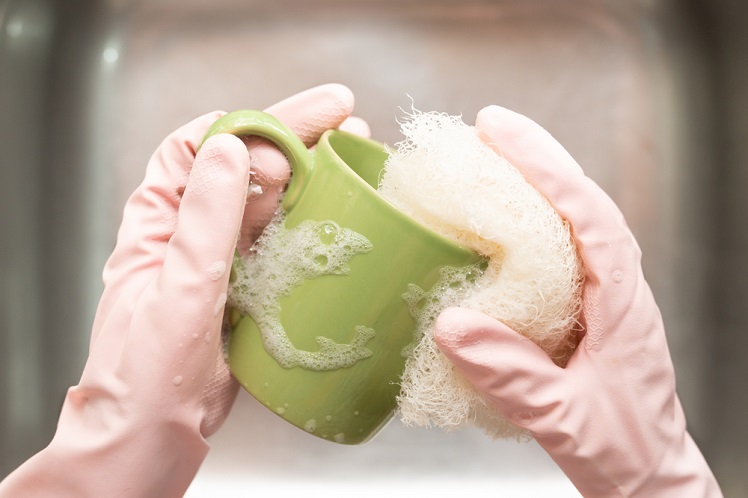
1. What Are Biodegradable Sponges?
Biodegradable sponges are sponges made from natural, sustainable materials that are designed to break down in the environment. These materials can be made from renewable materials, such as cotton, wood pulp, and natural cellulose. They are eco-friendly sponges which will be a great alternative to disposable sponges that are made from synthetic materials which can take up to hundreds of years to break down in the environment.
On the other hand, traditional dish sponges are made from synthetic and petroleum-based materials, such as polyurethane, polyester, and nylon. These non-biodegradable materials do not decompose, meaning they can stay in landfills and the environment for hundreds of years. Traditional sponges are also prone to harboring bacteria and microorganisms, which can lead to health risks.
2. What Are Biodegradable Sponges Made Of?
Biodegradable sponges are typically made from plant-based materials such as bamboo, natural coconut fibers, or cellulose fibers. Some biodegradable and compostable sponges may also contain plant-based additives such as essential oils for added benefits. Moreover, the 100% compostable material is highly absorbent and decomposes quickly when exposed to the environment.
In addition, they may also include a blend of natural and synthetic fibers, such as Polylactic Acid (PLA). The materials used are designed to break down naturally, reducing the environmental impact of the product.
3. What Type Of Sponges Is Biodegradable?
For various jobs, you need different types of sponges. Similar to traditional sponges, you’ll save time and effort if you know what kind of biodegradable and eco-friendly sponge is appropriate for the cleaning task at hand. Here are types of sponges with their advantages and disadvantages you should know.
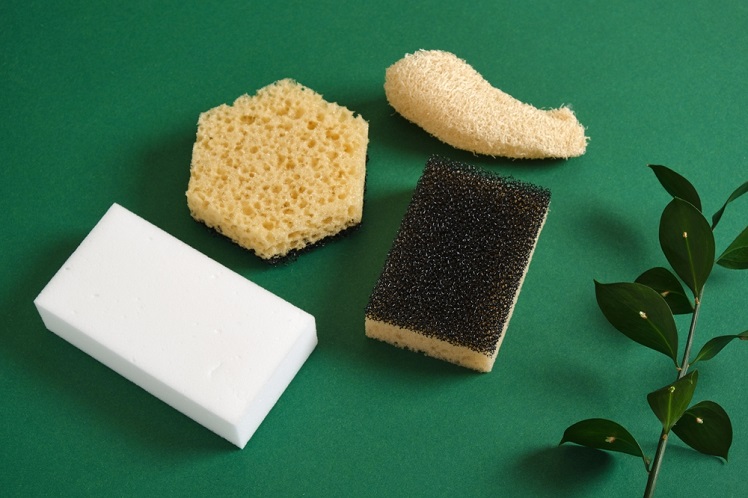
Cellulose Sponges
These are the most popular varieties of cleaning sponges because of their affordable price and absorbency. Highly porous and made from wood pulp, natural cellulose sponges are eco-friendly products which hold water and soap for simple washing. However, they frequently hold food particles that are hard to completely rinse off, shorten the sponge’s life, and harbor bacteria.
Natural Sponges
Natural sea sponges are completely organic and environmentally friendly. They grow on the ocean floors. These sponges are suggested for tasks like washing automobiles and windows because they are exceptionally soft and absorbent. To efficiently remove food that has been caked on in the kitchen, they can be too soft.
4. Why Should We Use Biodegradable Sponges?
Biodegradable sponges are an environmentally friendly alternative to disposable sponges. They are also plastic free and have zero non-degradable materials, meaning they won’t contribute to the global plastic pollution problem. Let us explain some benefits you will get by using biodegradable sponges in the following points below.

Zero Microplastic
Since biodegradable sponges are composed of cellulose and plastic free. They are composed of naturally biodegradable wood fibers and leave zero microplastic materials. Meanwhile, the majority of sponges you buy at the store are composed of plastic, which does not biodegrade and deteriorates as you use it. This indicates that the sponge is dispersing microplastics into the water or onto your plates, utensils, and cutlery as a residue.
Remove Food Easily
Don’t worry about biodegradable sponge’s effectiveness to remove food on your dishes! In fact, they work well to remove your food and dirt. The rough surface of cellulose sponges makes it simple to remove food from plates, dishes, and cups. In addition, we advise using a natural coconut fiber scrubber for baked-on grease and food, just as you would with a plastic sponge and scouring pad for heavier stains.
Hypoallergenic
Biodegradable sponges are perfect for people with sensitive skin or allergies to certain materials and chemicals because they are naturally hypoallergenic. Therefore, they can be biodegradable sponges for kids without endangering their delicate skin.
5. How Long Do Biodegradable Sponges Last?
Cellulose sponges and wipes can be used to clean a variety of surfaces, including dishes and counters in the kitchen. When properly cared for, they can be reused for up to six months and are biodegradable. Moreover, biodegradable sponges typically last between 3 and 6 months before they begin to break down.
In addition, it can take up to five years for natural sponges, which are constructed from plant fibers, to totally decompose. In soil, pure cellulose sponges can disintegrate in a matter of weeks. Meanwhile, plastic sponges take longer to decompose. According to Spazastore, 48 disposable sponges made from plastic decompose in landfills for about 58 years each.
How Do You Know If Sponges Are Biodegradable?
It is only normal for you to be interested in the biodegradability of the products you use on a daily basis to bathe and wash dishes. You are at the correct place, so you don’t need to worry about it too much because we give you the answers you require in the following points.
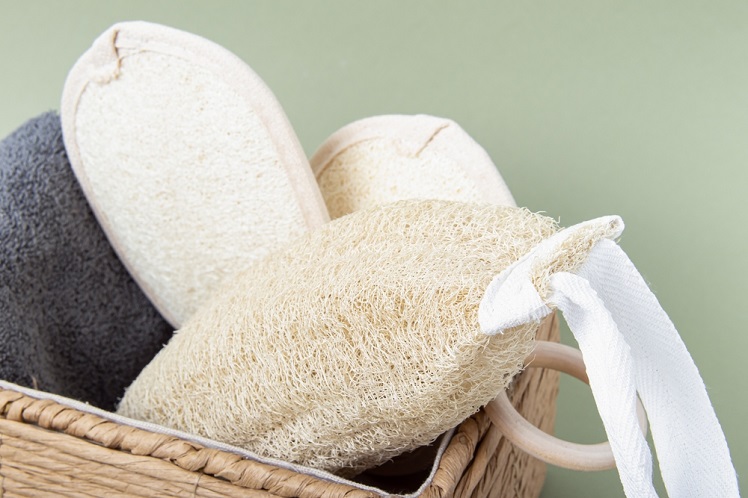
1. Check The Ingredient List
The best way to determine if sponges are biodegradable is to check the ingredient list in the packaging. Many biodegradable sponges will state that they are made from natural ingredients such as cotton, wool, or vegetable cellulose. Meanwhile others may be made from synthetic materials that are not biodegradable.
2. Check The Recycle Label
Check the label or container to discover if your sponge may be recycled. When you find the recycle label, meaning that your sponge is biodegradable. Moreover, your sponge is probably recyclable if it cites cellulose or plant fibers as one of the key ingredients.
3. Do A Simple Test
To check if your sponge is truly biodegradable, you can do a simple composting test in your backyard. A biodegradable sponge will start to break down in a few weeks at the compost chamber. Once your sponge is fully decomposed, you can freely repurchase this biodegradable product.
How Do You Make Homemade Biodegradable Sponges?
Biodegradable sponges are made from plant-based materials, such as cellulose, cotton, or hemp. These materials are then processed and shaped into sponges. Well, you can also create homemade sponges at home. Here are simple steps on how to make homemade sponges without harming the environment you should try.
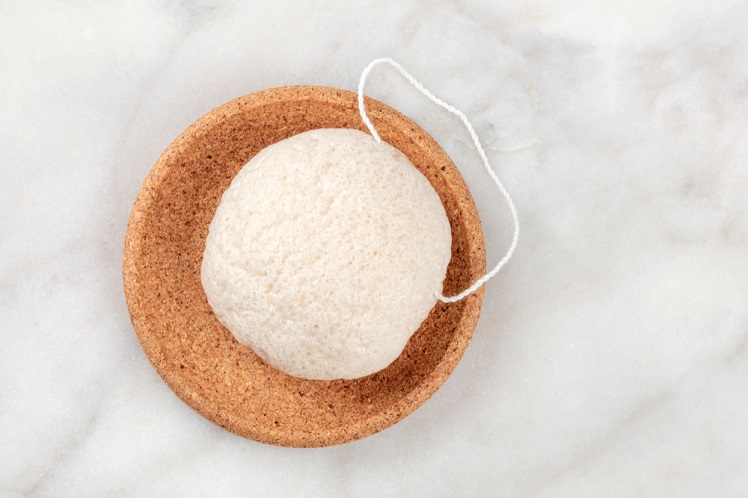
1. Mixing Ingredients
Start with a bowl of 1 cup of all-purpose flour, 1 cup of cornstarch, 1 teaspoon of baking soda, 1 teaspoon of sea salt and 1 cup of warm water. Mix all the natural ingredients together until they form a paste.
2. Molding and Heating Process
After you get the right mixture paste and consistency, it’s time to pour it into the mold. Or, simply grease a baking sheet and spread the paste onto it. Bake at 350 degrees Fahrenheit for 15 minutes.
3. Cutting and Cooling Process
After the heating process is done, take out the baking sheet from the oven. Cut the paste into small, sponge-sized pieces. Allow the sponges to cool and dry, then they are ready to use!
What Brands Of Sponges Are Biodegradable?
If you are planning to replace your regular sponges to the biodegradable one, you should know the best brands that really offer biodegradability. Especially there are some brands that still combine their “eco-friendly products” with petroleum-derived plastics, which are non-recyclable.
To help you get the right product, here are the best biodegradable sponge products we have gathered just for you.
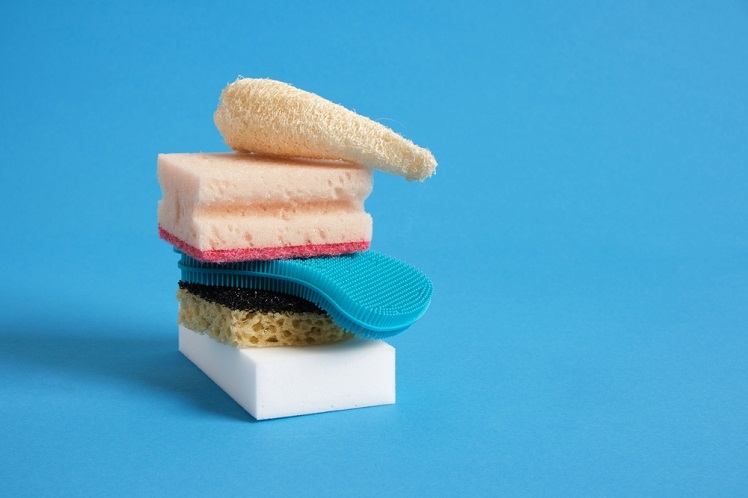
1. Etee – Loofie Scrubber
When it comes to the best and sustainable sponge, you can’t go wrong with Etee Loofie Scrubber. The brand features a soft side for wiping, and a rough side is for scrubbing. The surface of the dishcloth is made of cellulose-cotton and wood cellulose.
In keeping with Etee’s no-plastic approach, Loofie Scrubbers are shipped in recycled cardboard and are taped shut with biodegradable cellulose. Additionally, a portion of profits are donated to charitable causes, such as the WestCoast Children’s Clinic and the Mississauga Food Bank, both of which are close to the Ontario manufacturer.
2. Blueland – Scrubber Sponge
One business that focuses on minimizing plastic waste and using biodegradable packaging whenever possible is Blueland. Additionally, their scrubber sponge features the greatest inexpensive biodegradable sponge in terms of price. There are packs of three or six of these sponges available. They cost roughly $3 apiece when you purchase six, making them more affordable than a three-pack of Etee scrubbers.
3. Zero Waste Club – Biodegradable Kitchen Sponges
Zero Waste Club’s biodegradable kitchen sponges are composed entirely of wood pulp, unlike many other sponges on the market that contain cellulose and plastic fibers. Each Zero Waste Sponge can hold ten times its weight in liquid and dries quickly to prevent the formation of bacteria. Moreover, Zero Waste Club offers a great campaign that when you make a purchase, you can support 1% environmental nonprofit for the planet.
4. Clean Planetware – Mayan Loofah
Clean Planetware’s loofah sponges are unprocessed, resulting in 100% fiber loofah eco-sponges. The brand has the best mayan loofah eco-sponges product. The coarse, spongy texture and tubular shape of natural loofah may lead one to believe that it is created from dried coral or sea sponge. However, they are actually prepared from the fruit of the vine-grown squash family member Luffa aegyptiaca. Moreover they are sold individually or in packs of five in recycled and recyclable packaging.
5. No Tox Life – LUNA Charcoal Sponge
If you are looking for the best biodegradable scrubbing brand for your skin, you can go with No Tox Life. Konjac plant roots are used to create this cleaning sponge. Its roots are twisted into a puffy circle that may hold water. It works well as a scrubber when soaked in warm water since the incorporated charcoal softly exfoliates skin while also absorbing surface oils.
The LUNA Charcoal Sponge has a lifespan of around three months, although it can be doubled by boiling or microwave sanitizing. In addition, the 100% plant-based sponge can be composted once you’re finished using it.
Final Thought
Finally, biodegradable sponges are a great way to reduce our impact on the environment and make our homes more sustainable. They are made from natural, renewable materials, and are free from harsh chemicals, making them safe for both us and the planet. With their versatility and convenience, there is no reason to keep buying the regular sponge. As an Ecomaniac, it’s a perfect time to switch your sponge into the biodegradable one!
Latest Post:
- Bioplastic Pros and Cons: An Unbiased Examination
- Eco-Friendly Bottling: Aluminum as the Sustainable Hero?
- How to Make Bioplastic from Rice: A Step-by-Step Guide
- Eco-Tips: How to Recycle Amazon Envelopes?
- What Does Compostable Mean?
FAQ (Frequently Asked Questions)
Are biodegradable sponges good?
Yes. Biodegradable sponges are a great choice for cleaning due to their environmental friendliness. They are usually made with natural materials such as cellulose, vegetable fibers, or wood pulp, which break down naturally into the environment. They are also highly absorbent and can be composted after use, making them a sustainable and eco-friendly option.
How do you clean an eco sponge?
Eco sponges are typically made from a combination of cellulose and natural cotton, so they can be washed in the same way as any other washable sponge. To clean an eco sponge, follow these two steps:
- Soak it in a solution of warm water and a mild detergent.
- Rinse the sponge with clean water and allow it to air-dry. It is important to avoid using harsh chemicals or abrasive scrubbers, as these can damage the sponge.
Can biodegradable sponges compost?
Yes, biodegradable sponges can be composted. As long as they are made from natural and biodegradable materials, such as plant-based cellulose or natural fibers, they can be composted along with other organic materials. For more information on how biodegradable sponges are made, you can read the article above.
Are bamboo sponges compostable?
Yes, bamboo is a compostable sponge material. Since bamboo sponges are made of natural fibers from bamboo, they are categorized as biodegradable sponges. Additionally, because it is made with natural materials, when its useful life is over, it may be completely composted.
